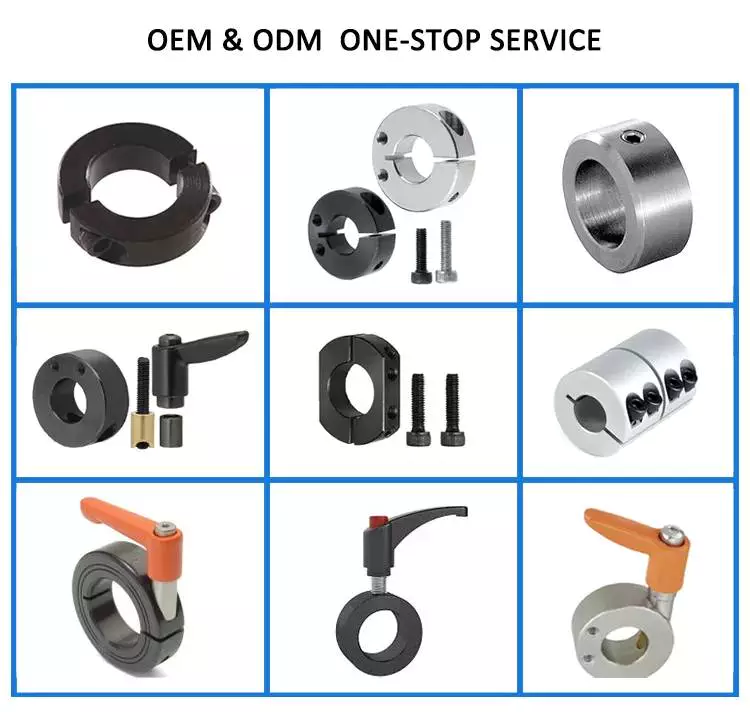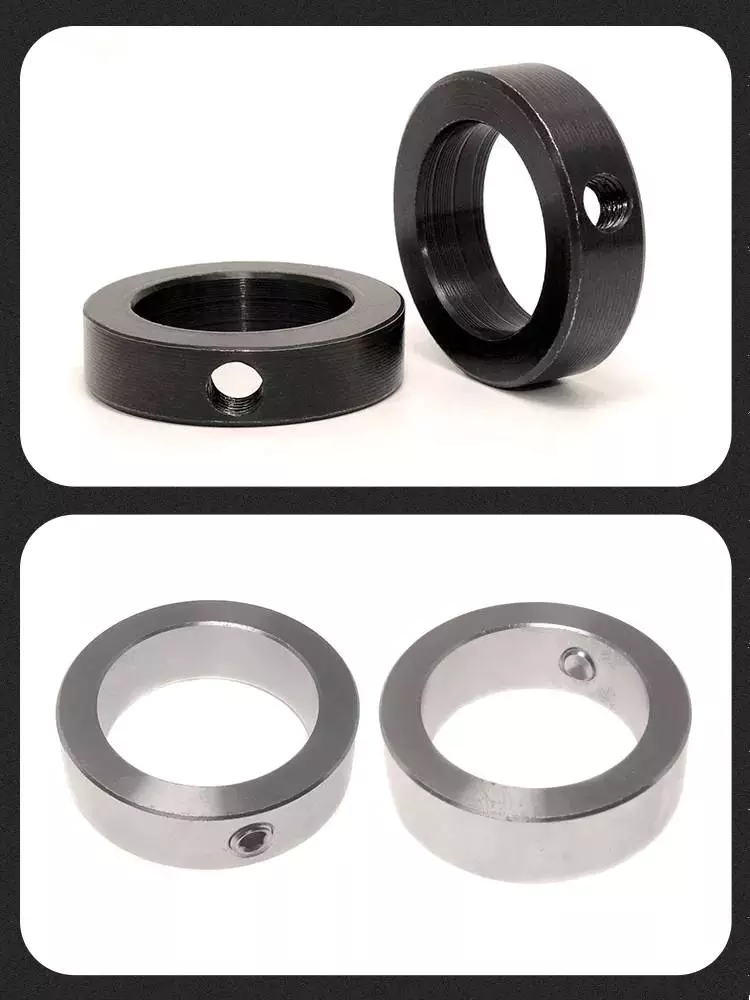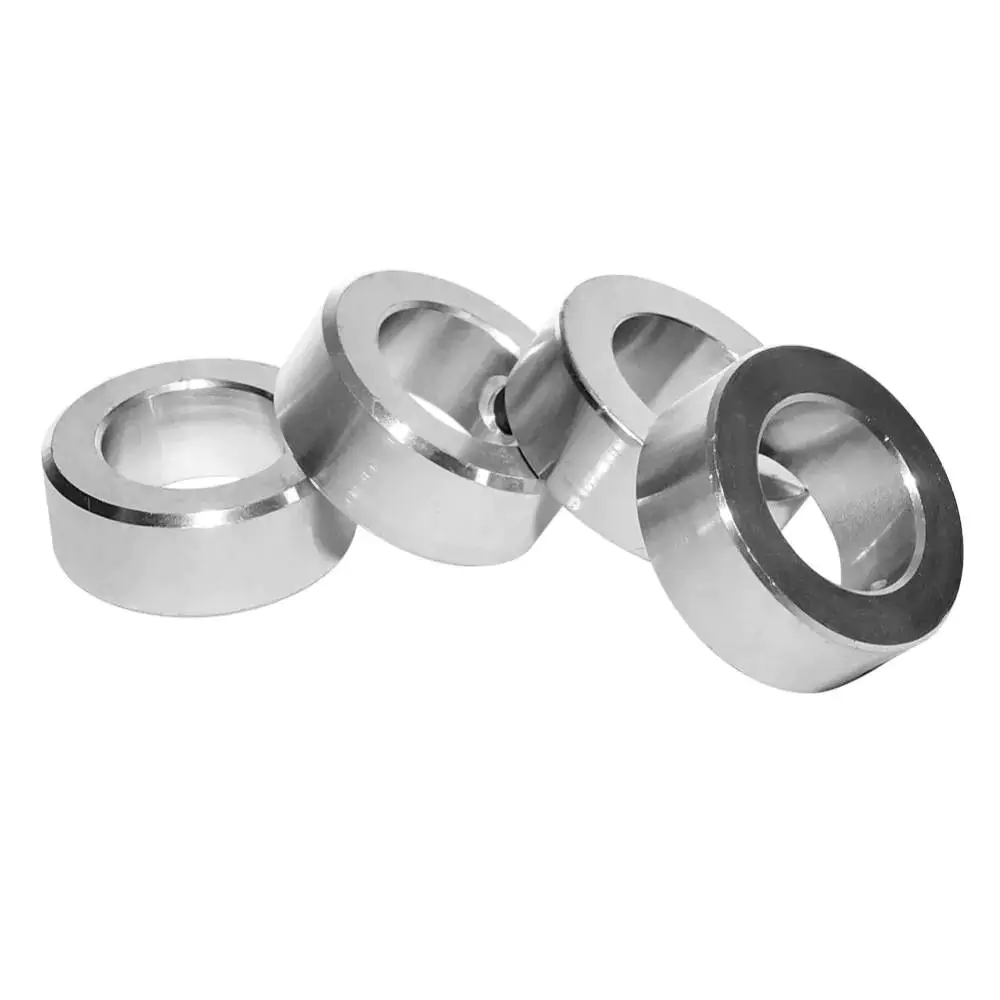
Are there guidelines on selecting shaft collars for applications with varying loads?
Yes, there are guidelines available to help in selecting shaft collars for applications with varying loads. When choosing shaft collars, it is important to consider the expected load conditions to ensure proper performance and prevent failures. Here are some guidelines to consider:
- Load Capacity Ratings: Shaft collars are typically assigned load capacity ratings by manufacturers. These ratings indicate the maximum load that a collar can withstand without deformation or failure. When selecting shaft collars for applications with varying loads, it is important to choose collars with load capacity ratings that exceed the maximum expected load in the application. This provides a safety margin and ensures reliable performance even under fluctuating load conditions.
- Dynamic Load Considerations: In applications with varying loads, it is important to consider both the static and dynamic load conditions. Static load refers to the constant load applied to the shaft collar, while dynamic load refers to the fluctuating or cyclic loads. The dynamic load can be higher than the static load due to factors such as vibrations, impacts, or operational variations. Ensure that the selected shaft collars have sufficient dynamic load capacity to handle the varying loads without premature failure.
- Material Strength: The material strength of the shaft collar is a critical factor in load-bearing capacity. Different materials, such as steel, stainless steel, aluminum, or plastic, have varying strength properties. For applications with varying loads, consider selecting shaft collars made from materials with higher strength and fatigue resistance to ensure they can withstand the load fluctuations without experiencing permanent deformation or fatigue failure.
- Design Features: Certain design features of shaft collars can enhance their load-bearing capacity and performance. For example, collars with a wider width or thicker cross-section can provide greater strength and resistance against deformation. Additionally, collars with multiple set screws or clamping mechanisms can distribute the load more evenly and provide a secure grip on the shaft, reducing the risk of slippage or misalignment under varying loads.
- Consulting with Manufacturers or Engineers: If you have specific application requirements or complex load conditions, it is advisable to consult with shaft collar manufacturers or mechanical engineers. They can provide expert guidance and recommend suitable collar designs, materials, and sizes based on the specific load variations in your application. Manufacturers often have engineering support teams that can assist in selecting the appropriate shaft collars for varying load conditions.
Remember that the selection of shaft collars for applications with varying loads should be based on a thorough understanding of the load characteristics, anticipated load range, and the specific requirements of the application. It is essential to choose collars that can safely and reliably handle the maximum expected loads to ensure optimal performance and prevent premature failure.

What are the advantages of using two-piece vs. one-piece shaft collars?
When considering shaft collars, you may come across two main types: two-piece and one-piece shaft collars. Each type has its advantages depending on the specific application and requirements. Here are the advantages of using two-piece and one-piece shaft collars:
Advantages of Two-Piece Shaft Collars:
- Easy Installation and Removal: Two-piece shaft collars are designed to be split into two halves, allowing for easy installation or removal on a shaft without the need to disassemble other components or move the shaft. This can save time and effort during installation or maintenance procedures.
- Positioning Flexibility: Two-piece collars often have a clamping mechanism that allows for fine adjustment and precise positioning along the shaft. This can be advantageous when precise placement is required, such as aligning components or achieving specific clearance or spacing.
- Accessibility for Retrofitting: In situations where it may be difficult or impractical to slide a collar onto the end of a shaft, two-piece collars provide a convenient retrofitting solution. They can be installed around the shaft by opening the collar and clamping it in place, making them suitable for retrofitting on existing shafts or equipment without requiring shaft disassembly.
- Shaft Protection: Two-piece collars typically have a split design with smooth, rounded edges, which helps prevent damage to the shaft during installation or removal. The collar halves can distribute clamping forces evenly, reducing the risk of shaft deformation or scoring.
- Collar Customization: Two-piece collars often offer more customization options, such as the ability to replace or interchange collar components, add features like mounting holes or attachment points, or modify the collar to accommodate specific shaft sizes or configurations.
Advantages of One-Piece Shaft Collars:
- Simplicity and Compactness: One-piece shaft collars have a simple, solid construction without any moving parts or additional components. This makes them compact and easy to handle, and they require less space along the shaft compared to two-piece collars.
- Cost-Effectiveness: One-piece collars are often more cost-effective than two-piece collars due to their simpler design and manufacturing process. They can be a budget-friendly option for applications where precise positioning or frequent adjustments are not required.
- High Clamping Force: One-piece collars can provide high clamping force due to their solid construction and uniform distribution of pressure. This makes them suitable for applications where a secure and rigid connection between the collar and the shaft is crucial.
- Low Maintenance: Since one-piece collars do not have moving or adjustable parts, they typically require less maintenance. Once installed, they provide a reliable and stable connection without the need for periodic adjustments or repositioning.
- Compatibility with High-Speed Applications: One-piece collars are generally well-suited for high-speed applications due to their solid construction and balanced design, which can minimize the risk of imbalance or vibration at high rotational speeds.
Ultimately, the choice between two-piece and one-piece shaft collars depends on factors such as the specific application requirements, ease of installation or retrofitting, customization needs, cost considerations, and desired level of adjustability or precision. It is important to evaluate these factors and select the type of shaft collar that best suits your needs for optimal performance and functionality.

Are there tutorials on the proper installation of shaft collars?
Yes, there are tutorials available that provide guidance on the proper installation of shaft collars. These tutorials can be helpful for individuals who are unfamiliar with the installation process or want to ensure that they are installing the collars correctly. Here are some common sources where you can find tutorials on the installation of shaft collars:
- Manufacturer Websites: Many manufacturers of shaft collars provide detailed installation instructions on their websites. These instructions may include step-by-step guides, diagrams, or videos that demonstrate the proper installation techniques. Visiting the websites of specific collar manufacturers and exploring their resources section or product documentation can help you find the installation tutorials you need.
- Online Industrial Communities and Forums: Industrial communities and forums dedicated to mechanical components or equipment often have discussions or threads related to the installation of shaft collars. Participating in these communities and posting inquiries about installation techniques can help you connect with professionals or experienced users who can provide guidance or share their knowledge.
- Video Sharing Platforms: Platforms like YouTube or Vimeo host a wide range of instructional videos, including tutorials on the installation of various mechanical components. Searching for "shaft collar installation tutorial" or similar keywords on these platforms can yield helpful videos that visually demonstrate the proper installation techniques. Watching these videos can provide a clear understanding of the installation process and any specific considerations to keep in mind.
- Trade Publications and Magazines: Trade publications or magazines related to mechanical engineering, industrial equipment, or power transmission may feature articles or guides on the installation of shaft collars. These resources often provide detailed explanations, tips, and best practices for proper installation. Checking these publications or their online platforms can give you access to written tutorials or expert insights.
- Online Documentation and Manuals: Some manufacturers or suppliers provide downloadable documentation or manuals for their shaft collars. These documents may include installation instructions along with other technical information. Searching for the specific collar model or brand, followed by keywords like "installation instructions" or "user manual," can help you find relevant documentation that covers the installation process.
When using tutorials for shaft collar installation, it is important to ensure that the information is sourced from reputable and reliable sources. Follow the provided instructions carefully, and if in doubt, consult with professionals or seek guidance from the manufacturer. Proper installation of shaft collars is crucial for their effectiveness, reliability, and the overall performance of the machinery.


editor by CX 2024-01-11